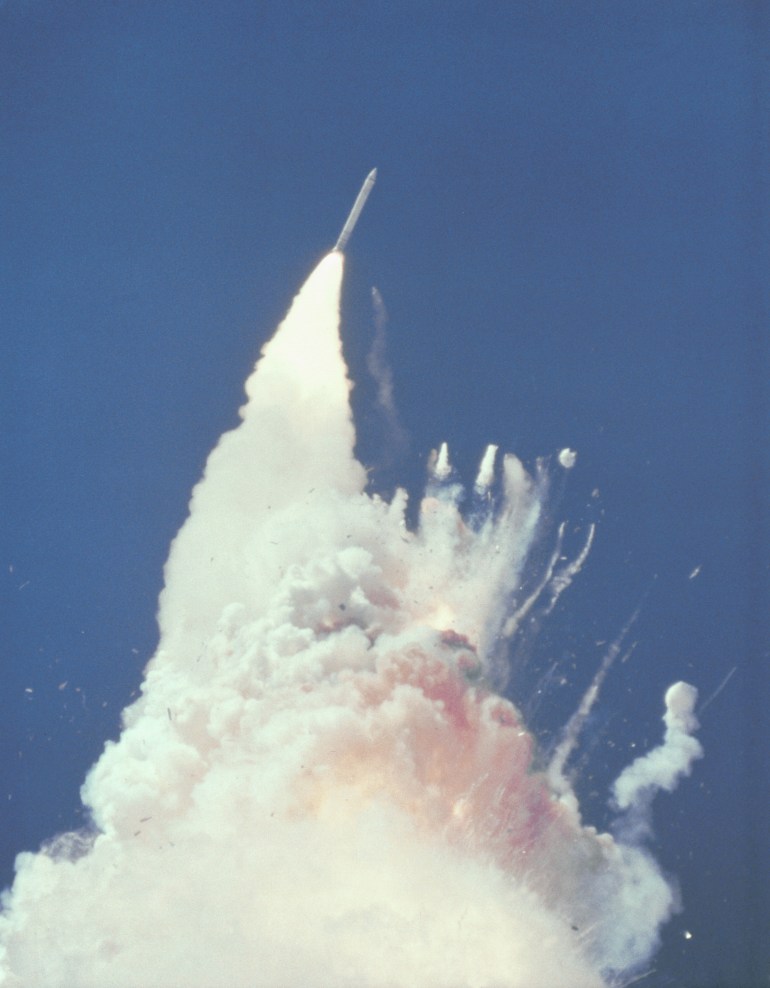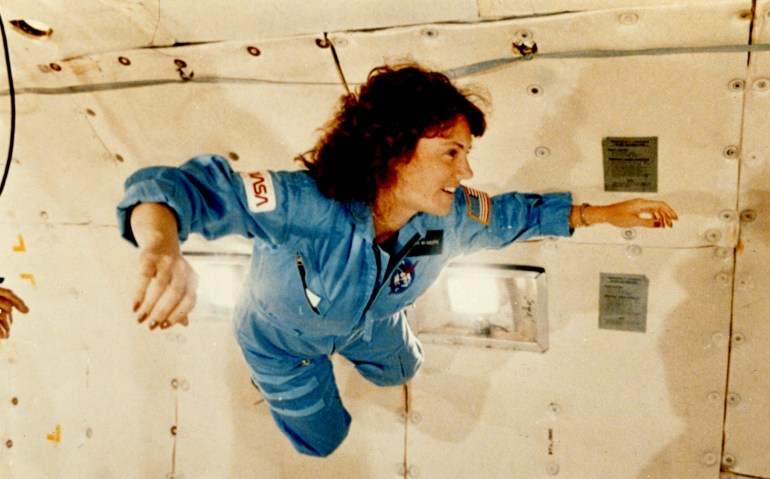Space Shuttle Challenger remembered 35 years after its explosion
NASA uses its Day of Remembrance to mark the 35th anniversary of the Challenger tragedy that shocked the world.

US space agency NASA is commemorating the 35-year anniversary of the Challenger space shuttle explosion on Thursday, its Day of Remembrance, recalling the landmark moment of “grief”.
“Thirty-five years ago today, NASA and the nation lost seven of our family in a moment that left a timestamp on American history – a ‘Where were you when…’ moment created only when the shared dreams and values of a nation collide with shared grief”, NASA acting Administrator Steve Jurczyk said on the agency’s website.
Keep reading
list of 3 itemsSpaceX capsule with four astronauts docks at space station
Fly me to the moon: Three men to pay $55m each for SpaceX flight
The Challenger launched from the Kennedy Space Center at Cape Canaveral, Florida on on January 28, 1986.

Seventy-three seconds after takeoff, the shuttle exploded due to what would be determined as a faulty solid-rocket booster. All seven people on board died: Gregory Jarvis, Judith Resnik, Dick Scobee, Ronald McNair, Mike Smith, Ellison Onizuka and Christa McAuliffe.
McAuliffe was set to be the first teacher in space. McNair, an astronaut and physicist, was the second Black American to fly in space.

The disaster prompted mourning and condolences from across the world.
“We will never forget them, nor the last time we saw them, this morning, as they prepared for the journey and waved goodbye and ‘slipped the surly bonds of earth’ to ‘touch the face of God’,” then-President Ronald Reagan said in his eulogy.
Then-Soviet leader Mikhail Gorbachev wrote to Reagan, ”We partake of your grief at the tragic death of the crew of the space shuttle Challenger. We express our condolences to the people of the United States and to the families of those who were killed in the accident.”
Investigation
The disaster spawned an investigation into the cause of the explosion called the Rogers Commission Report.
It found serious deficiencies in NASA management’s scientific understanding. The fault in the booster engine was determined to have been caused by rubber O-rings meant to seal rocket boosters.
The O-rings were never tested to withstand extreme cold, as was encountered as the shuttle flew higher on the morning of the explosion.
The investigation found concerns about the O-rings were raised by engineers at Morton Thiokol, the government contractor responsible for their production, but these concerns were ignored by NASA managers.
The morning of the launch saw temperatures of −2.2C to −1.7C (28.0F to 28.9F), far lower than normal for takeoffs.

The report noted “failures in communication” led to a launch “based on incomplete and sometimes misleading information, a conflict between engineering data and management judgments, and a NASA management structure that permitted internal flight safety problems to bypass key Shuttle managers”.
In response to the investigation, NASA created the Office of Safety, Reliability and Quality Assurance and reconstructed the solid rocket boosters under the supervision of an independent commission.
The US space shuttle programme was active from 1981 to 2011 for a total of 135 flights. It carried a combined total of 1,593 tonnes of cargo into space.
NASA also remembered the crews of Apollo 1, which saw three astronauts die in 1967, and the Space Shuttle Columbia disaster of 2003, which saw seven astronauts die as they reentered the Earth’s atmosphere.
NASA is currently working to send humans to Mars and put another man and the first woman on the Moon, Jurczyk said.